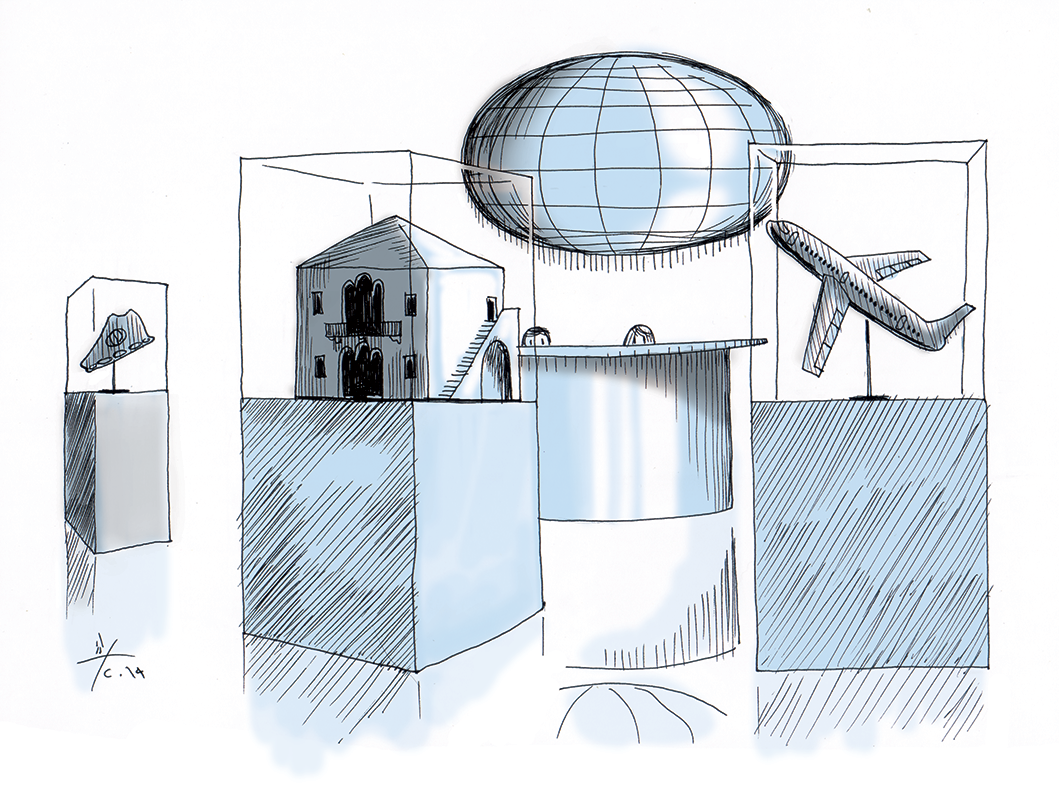The Financialization of Property and the Housing Market in Lebanon

Lebanon’s housing market has been in crisis for approximately half a century. More families, both Lebanese and non-Lebanese, are struggling to find housing that meets their requirements in terms of budget, comfort, and occupancy state. Though old, this crisis has worsened in the last 25 years under the pressure of a phenomenon that many cities around the world are witnessing: the financialization of the property market. This term is being repeated more and more often in academic debates and among citizens. What exactly does it mean, and what does it denote in the Lebanese case? Furthermore, what role does the state, which is usually branded weak or absent in Lebanon, play in this phenomenon’s strong rise? Finally, how does the financialization of property affect the housing market, especially in Greater Beirut?
1- The Financialization of Property: A Global Phenomenon
To understand the financialization of property, we must understand the evolution of the methods of financing this capital-intensive economic sector. Since the 1980s, these sources of financing have witnessed a change with the appearance of a new form of capitalism on the global level whereby value creation is linked to performance in the financial market. This change in capitalism, which is accompanied by the success of the neoliberal ideology, materialized in a large increase in the circulation of liquidity in the liberalized and globalized financial markets. In this context, asset managers (from investment banks to retirement funds to private equity funds and so forth) began to take an interest in land and property in cities, as well as in the bonds and stocks issued by governments and companies, in order to maximize profitability, reduce taxes, and diversify risks.
Hence, the financialization of property refers to the conversion of buildings, apartments, and lands earmarked for construction into financial assets. This change generally occurred via 1) the registration of properties within an ad hoc company whose capital is open to investors, 2) the establishment of a real estate portfolio by investment companies incorporated or not incorporated into the market, and 3) the use of properties, whether land or housing, as “implicit” financial assets upon which financial derivatives depend.
In Lebanon: Solidere as the Genesis
Historically, the land and housing market in Lebanon has been a preferred destination for private capital. Since the end of the 19th century, the funds injected by expatriates in Europe, America, and Africa were intensively invested in acquiring land or building houses. Later, in the decades following independence, property became a preferred means of investing the wealth amassed with the beginning of enormous oil production in the Gulf states. Subsequently, Beirut witnessed a construction boom from the end of the 1960s to the beginning of the Civil War. But the power of property to attract private capital did not waver during the Civil War, and it increased with the reconstruction during the 1990s.
In several regards, Solidere represents the genesis of the financialization of property in Lebanon given the financial engineering model that the real estate company selected: amassing capital in the financial market and compelling landowners to give up their lands in exchange for stocks. In other words, the reconstruction of the capital city was more of a financial product aimed at attracting international investors than an urban project aiming to revive the heart of the city. Since that time, residential property in Greater Beirut has witnessed a twofold process of financialization “from above” and “from below”.
Financialization “from Above”: Urban Planning in the Form of Towers
The first type of financialization – that which occurs “from above” – came in the form of the proliferation of luxury towers in many of Beirut’s neighborhoods, even beyond Solidere. Even though the slowdown of the property market in recent years has reduced this surge, the financing of building construction, just like the purchase of apartments, turned into the employment and investment solutions that wealthy Lebanese locals, expatriates and foreign investors wanting to diversify and maximize their financial assets were looking for. Examples that demonstrate this logic excellently include the real estate projects Sama Beirut, Place Pasteur, Abdel Wahab, Sky Gate, and La Citadelle.

Achrafieh: A Sight of the Financialization of Property “from Above” (Source: Marot 2015)
Hence, it is important to understand the factors behind the attraction of luxury projects in Beirut for investors. These factors are many, but I must mention the role of the Paris II Conference held in 2002. At that time, under the auspices of several sponsors, the Ministry of Finance, as well as the Bank of Lebanon and the Lebanese banks, which are the state’s main creditors, decided to reduce the cost of public debt service in order to ensure the Lebanese financial system’s stability. In reaction to the drop of interest on treasury bonds, a number of financial actors, foremost among them the private banks and investment banks, bolstered their presence in the property market via ad hoc subsidiary companies based on the simple idea of providing alternative investment tools to their wealthy clients. Additionally, the enormous flow of liquidity into the Lebanese financial system as a result of the rise of oil prices and then the 2008 financial crisis accelerated the arrival of resources and financial players into the property sector.
Financialization “from Below”: Expanding the Channels for Accessing Subsidized Ownership
A second form of property financialization – one occurring “from below” – emerged with the development of the mortgage system for home loans. In the last 20 years, Lebanese banks granted 130,000 home loans with a total value of US$13 billion.
This increasing recourse to bank financing for homeownership depends on a kind of partnership between the public sector and private sector largely supported by the Bank of Lebanon. Since the end of the 1990s, this system has granted the Public Corporation for Housing (PCH) the role of the main intermediary between the borrowing families, which benefit from subsidized interest rates and longer loan periods (30 years), and the banks, which can develop their private credit activity with limited risks. After a decade, and at the peak of the property boom at the beginning of the third millennium, the benefits granted to banks for their loans sponsored by the PCH extended to include a group of their home loan programs. From 2013, this subsidization was reinforced in the context of the economic slowdown and the slowdown of the property market: the economic recovery plans developed by the Bank of Lebanon center on supporting property demand. After months of uncertainty following the freeze of the subsidy in 2018, in January 2019 the central bank approved the principle of continuing the home loan subsidy with US$525 million.
Today, more than 100,000 Lebanese families benefit from favorable terms for obtaining property ownership. Hence, over 20 years, home loans have become favored tools of investment for the commercial banks, which saw them as a key means to grow and diversify their activity.
2-The Lebanese State: A Key Engineer of the Financialization Process
Contrary to the recurring discourses about the Lebanese state’s weakness, especially in the context of urban issues, a careful analysis of the property sector’s financialization reveals that government policies have played a primary role. Among them are three measures that facilitated and encouraged the conversion of real property into financial assets.
Firstly, the structure of the legal, regulatory, and taxation framework plays a part in shaping the decisions and practices of investors in the private sector, financial institutions, and other property developers. This extremely stimulating framework (such as the financial system and urban planning regulations) encourages investments in land and luxury properties while regulating the mechanisms for converting land, buildings, and apartments into financial assets, especially via the system of Lebanese limited liability companies (société anonyme libanaise).
Hence, the reorganization of the state institutions active in financing residential property becomes a process necessary for keeping pace with the financialization “from below”. There are two important examples of this: privatization and the increase of the Housing Bank’s capital in 1994 and the abolishment of the Ministry of Housing in 2000. However, the most important initiative is the establishment of the PCH, which plays a key role in the rapid growth of banks’ property loan portfolios that I explained earlier.
Finally, the Bank of Lebanon was probably the political tool with the most impact. The central bank kept pace with the financialization by launching a series of regulatory rules and standards that govern the financing of the property sector (such as restricting credit and unifying financial engineering solutions) and supplying banks with low-cost resources for financing home loans. Hence, the policy of the Bank of Lebanon greatly influenced the form and practices of financiers, property developers, and buyers, while trying at the same time to influence the course of land and residential property prices.
The Short-Term Stability of Lebanese Capitalism as a Primary Goal for the Government Authorities
By facilitating the financialization process, the state seeks to support real estate activity and construction and to increase the prices of land and property while simultaneously avoiding excessive market activity and a market collapse. The state has maintained this goal year after year despite the downturn in activity and prices in recent years.
Clearly, the individual interests of the political and economic elite that holds the reins of power and is extremely involved in the property and financial sectors greatly influence the decisions by the government, Parliament, and the central bank that support growth. These decisions must also be read as part of the necessary regulation of Lebanese rentier capitalism, which depends largely on the banking sector’s control of foreign financial resources and recycling of these resources. In this regard, assets and investments in property and construction, in addition to the rise of property and land prices, are considered necessary for economic growth and the stability of the monetary and financial system on the basis of mechanisms that will not be explored in this article. By attracting new resources to the property market, financialization has repeatedly fueled property and construction booms since the end of the war, especially in Beirut. At the same time, this helped reproduce an economic, monetary, and financial system with little sustainability. This increasing entanglement between the property and financial sectors can perform an adverse role: a collapse in the property market that would probably lead to a financial crisis.
3- What are the Repercussions on Obtaining Housing?
The state-sponsored financialization of property is a source of many of the current problems in the housing market. Three of these problems are the explosion of prices, the restricted nature of homeownership via banks, and the worrying state of the rental market.
Property and Land Prices Rise Intolerably
One of the expected consequences of the flow of liquidity into the property and construction sectors is the explosion of property and land prices, especially in Greater Beirut. The value of land and property observed in the market, which has long inflated as a result of demand by foreign investors, is diverging from the average family income. Between 2003 and 2013, the average individual income rose by 85%, whereas property prices rose 200% in the capital. Hence, the property purchasing power of Beirut’s residents declined sharply over one decade. At the same time, land prices rose by 600%, which makes building reasonably priced houses more difficult.
Homeownership Not Open to All
During the sharp rise in property prices, the rapid expansion of subsidized loans contributed to the appearance of a middle class of homeowners, especially in Greater Beirut. According to many political officials in the banking sector, the means of obtaining homeownership through banks constitute an effective response to the housing crisis. However, this analysis is refuted by the fact that in 2017, 55.2% of the resident population (15 years and older) did not have a bank account. This figure rises to 70% among the poorest families. Hence, most of the resident population has no actual access to credit. Even among people with bank accounts, many do not qualify for loans because of insufficient or irregular income or because they cannot afford a down payment. In short, in Lebanon, as in many middle-income countries, obtaining homeownership via the bank, which is the main means of financialization “from below”, does not appear to be an effective solution for improving access to housing for the largest possible number of people.
The Worrying Situation of the Rental Market
Finally, the financialization of property affects, in terms of supply and demand, the formal rental market. This market, which was formally unified by the 2014 law ending rent control, has today become out of most renters’ reach and less attractive for investors.
The high prices in the rental market in the main Lebanese cities are also diverging from families’ purchasing power. Rent prices rose severely during the past 15 years, especially in Greater Beirut. Between 2008 and 2013, rents rose by 66% in Ras Beirut and 38% in Aramoun in Beirut’s suburbs, according to the few available estimates. The reason is simple: lessors take advantage of lease renewals to double their income from the rents, which they think should keep pace with their properties’ rising value. Consequently, humble families are gradually turning toward the informal market, where living conditions are difficult and leases are insecure.
The concerning situation in the rental sector could also be explained via the sector’s inability to attract investors, both individuals and institutions. When property is financialized, the profitability of apartments or buildings is assessed in light of other financial assets (such as shares, bonds, and deposits). The estimated annual return on leased property of between 2% and 4% is still much lower than the return on bank deposits (5.6% for deposits in USD and 8.9% for deposits in LL) or treasury bonds (between 5.2% and 8% depending on the length of maturity). The anticipated rise in interest rates will not improve returns on rent. Hence, this lack of attractiveness of rent revenue negatively impacts the number of houses available for rent in the housing market.
This article is an edited translation from Arabic.
Keywords: Lebanon, Beirut, Housing market, Financialization of property,



